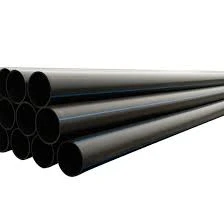Nov . 10, 2024 14:27 Back to list
HDPE Pipe Accessories for Efficient Plumbing Solutions and Durable Connections
Understanding HDPE Pipe Fittings Essential Components for Modern Infrastructure
High-Density Polyethylene (HDPE) pipe fittings have become increasingly important in various industries due to their superior qualities and versatility. As a crucial component in modern infrastructure, HDPE pipe fittings are widely used in water supply systems, drainage, sewage, and gas distribution. This article delves into the characteristics, benefits, types, and applications of HDPE pipe fittings, emphasizing their significance in today’s world.
Characteristics of HDPE Pipe Fittings
HDPE is known for its excellent strength-to-density ratio, making it a preferred choice for piping systems. The material is extremely resistant to impact, corrosion, and decay, which enhances its longevity and reliability in various conditions. Additionally, HDPE fittings exhibit low thermal conductivity, which helps in reducing heat loss. They are also light in weight compared to traditional materials like metal or concrete, making them easier to transport and install.
One of the most appealing characteristics of HDPE is its flexibility. This property allows HDPE pipe fittings to withstand a certain degree of movement and bending, thereby reducing the risk of breakage under stress. They can be used in applications involving high-pressure systems, making them suitable for transporting liquids, gases, and solids in different environments.
Benefits of HDPE Pipe Fittings
The advantages of using HDPE pipe fittings are numerous. Firstly, they offer excellent resistance to harsh chemicals, making them ideal for industrial applications where exposure to corrosive substances is a concern. This resistance minimizes the risk of leaks and ensures a safer environment for both workers and the surrounding ecosystem.
Secondly, the durability of HDPE materials significantly reduces maintenance costs. Unlike traditional materials that may require frequent repairs or replacements, HDPE fittings can last for several decades, depending on application conditions. This longevity not only saves money but also reduces the environmental impact associated with waste generated from replaced materials.
Moreover, HDPE pipe fittings are environmentally friendly. They are recyclable and do not leach harmful substances into the soil or water supply, making them a sustainable option for construction and infrastructure projects. Their ability to withstand extreme temperatures, both hot and cold, also adds to their eco-friendliness by ensuring efficient performance in diverse climates.
hdpe pipe fittings

Types of HDPE Pipe Fittings
HDPE pipe fittings come in various types to cater to different needs and applications. Some common fittings include
1. Elbows Used to change the direction of the pipe system, elbows can be found in 45-degree or 90-degree variations. 2. Tees These fittings allow the joining of three pipes, typically branching out from a primary pipeline. 3. Reducers Used to connect pipes of different diameters, reducers facilitate the transition from a larger pipe to a smaller one. 4. Caps and Plugs These fittings are utilized to seal the ends of pipes, preventing any unwanted flow or entry of contaminants. 5. Couplings Designed to connect two pieces of pipe together, couplings can help in extending lengths or repairing damaged sections.
Applications of HDPE Pipe Fittings
Due to their robust characteristics and benefits, HDPE pipe fittings are employed in various industries. In the water supply sector, they are commonly used for potable water distribution, ensuring safe drinking water reaches consumers. In agriculture, HDPE fittings are integral to irrigation systems, facilitating efficient water management.
Furthermore, the sewage and drainage industry relies heavily on HDPE fittings to construct effective waste management systems. The ability to resist corrosion significantly reduces the potential for leaks and environmental contamination.
In the oil and gas sectors, HDPE pipe fittings are used for conveying fuels and other hazardous materials due to their strength and inert properties.
Conclusion
HDPE pipe fittings represent a significant advancement in piping technology, combining durability, flexibility, and cost-effectiveness. Their diverse applications and environmentally friendly nature make them a vital choice for contemporary infrastructure projects. As industries continue to evolve, the role of HDPE pipe fittings will only grow in importance, supporting the sustainable development and efficient management of our essential resources.
-
Durable Glossy PVC Rigid Sheet | Premium High-Shine Panels
NewsAug.26,2025
-
Durable PP Rigid Sheet: Lightweight, Chemical Resistant Solutions
NewsAug.21,2025
-
PVC Grey Sheet for Extraction: Chemical Resistant & Durable
NewsAug.19,2025
-
Durable PVC Pipe Fittings for Plumbing & Irrigation Needs
NewsAug.18,2025
-
HDPE Steel Belt Reinforced Spiral Corrugated Pipe | High Strength
NewsAug.17,2025
-
HDPE Pipe Fittings: Durable, Leak-Proof Solutions
NewsAug.16,2025

